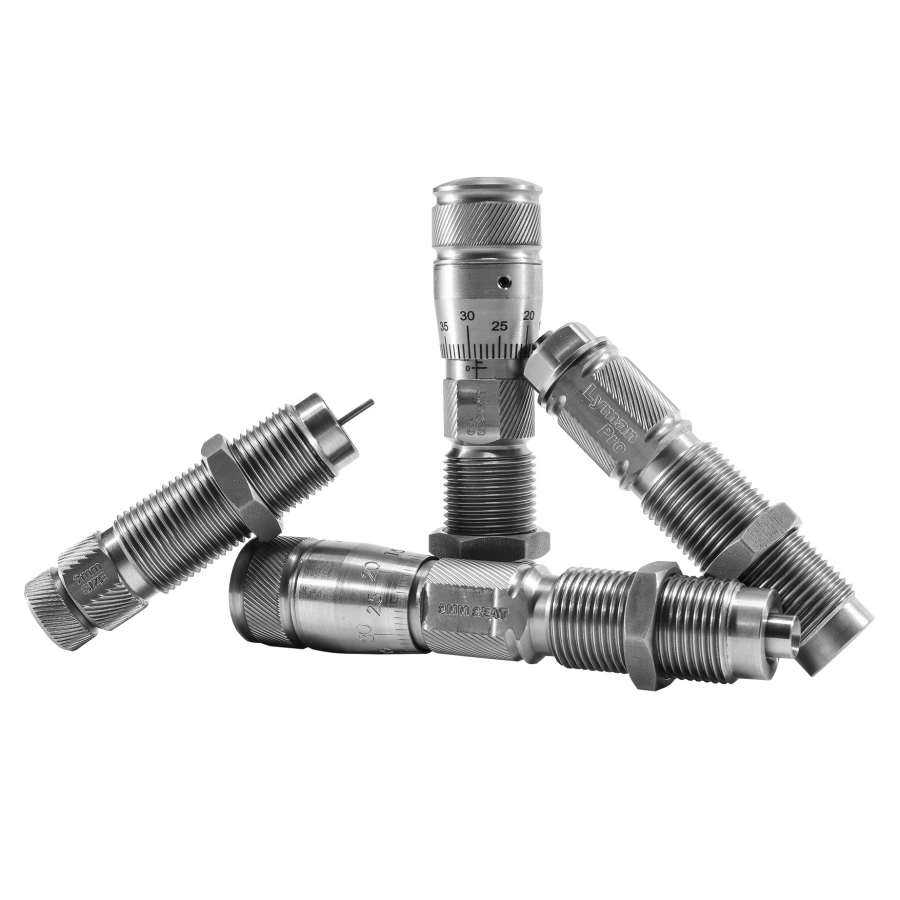Lyman Pro .40 S&W 10mm mat rices set a new standard for precision and quality in ammunition elaboration, which is why they are a popular choice for experienced and novice shooters.
The dies fit regular progressive presses, as well as revolver and single-stack presses. All matrices in the Lyman Pro series are made from hard stainless steel, giving them extreme durability, wear and corrosion resistance. No more rusty dies!
FL Lyman stainless steel Pro Carbide die
Lyman Pro Carbide matrices made from hard stainless steel that is highly resistant to corrosion. The format matrices have polished carbide rings for superior wear resistance and reduced frictional force. The matrices additionally have a spring-loaded stinger to ensure that the primer is vigorously removed from the socket.
Lyman clamping matrix with micrometer screw
The Taper Crimp Matrix has an adjustable micrometer head, which allows you to crimp the shell with near perfect precision. If you want to change the shell crimp on a bullet by a few thousandths of an inch, simply rotate the micrometer head to the desired setting. A floating collet centers the bullet and ensures perfect neck clamping. The clamping die is also made of highly corrosion-resistant stainless steel, so we are guaranteed that the Lyman die is corrosion-resistant and will serve us for a long time.
Lyman seating matrix with micrometer screw
The bullet seating matrix has an adjustable micrometer head, which allows us to seat the bullet in a way at a height that perfectly matches the transition cone of our weapon. Its floating punch in the bullet seating area centers the bullet perfectly on the shell and eliminates excessive runout.
Lyman's two-stage shell neck formatting die (M)
Like a standard expander, the matrix does not stretch the shell, so it improves the precision of formatting and extends the life of the shell, According to many shooters, the two-stage shell neck formatting matrix noticeably improves the efficiency and repeatability of elaborated ammunition. During the first stage, the inside of the shell neck is expanded to slightly less than the diameter of the bullet, ensuring an optimal fit of the shell neck. During the second stage, the inlet of the shell is expanded to a bullet diameter or slightly larger. This allows the bullet to be placed perfectly centered and axial to the shell neck.









